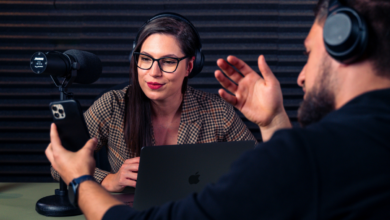5 Key Components of Custom Mobile App Design

Mobile users have a limited attention span, so they expect your app to make an immediate impact. That means it needs to be easy and compelling to use.
This can be achieved by applying simple design best practices. It includes things like clear communication and consistent visual identity. Using these tips can help you develop custom mobile app design that will keep customers happy and increase your profits.
White space
White space is an important component of custom mobile app design. It allows you to showcase your brand’s message and add a sense of elegance to your design.
In addition to aesthetics, white space is also useful in guiding users’ attention. Keeping white space in mind when designing your pages can help you make sure that users can easily locate important information, like call-to-action buttons.
It’s also important to remember that you should avoid using too much white space. This can lead to a cluttered design that is difficult to read.
One way to keep white space in mind when designing for mobile devices is to keep in mind the Law of Proximity. This law states that related objects should be spaced closer together, while unrelated items should be spaced further apart.
Colors
Color is a vital aspect of your app’s visual design. It can influence user engagement, brand identity, and a wide variety of other factors.
First, it is important to understand what mood you want to evoke in your users. For example, does your app aim to be accessible, calm, bold, sophisticated, polished, or quirky?
Next, choose colors that are relevant to your target audience. For instance, green tones are often associated with environmentally friendly products and blue tones are linked with health.
Moreover, it is essential to test your app’s colors in different lighting conditions. This will help you create a more functional design and optimize the overall experience.
Text
Custom mobile app design is all about incorporating the right amount of text and graphics to create a compelling user experience. The ratio of text and graphics in the design affects how users engage with an app and makes a difference between success and failure.
The type of fonts used in the design should be carefully chosen, as font legibility is an essential element of mobile UI design. Fonts that are hard to read, or illegible, will frustrate users and cause them to leave an app quickly.
Font size and spacing are important components of UI design that help improve the reading experience of users. The right font point size for mobile apps can ensure that the text is legible and easy to read on small screens.
While fonts are an integral part of a great UI design, they also play a critical role in improving the retention rate and engagement quality. To increase the impact of your text, choose a versatile font that has a good balance of legibility and style.
Images
Images are a powerful visual communication tool that can add meaning and context to an app. However, they also have the potential to distract users and detract from user experience.
As a result, it is important to use images that convey the message of your app and are related to its purpose. They should be iconic and contain meaningful elements with minimal distractions.
Moreover, be sure to deliver images at the proper screen size for optimal display. This can be done by adjusting image-specific expressions and srcset attributes, as well as using HTML5’s max-width and height values.
When displaying large images on mobile screens, it is important to keep their original aspect ratios to avoid distortion. If your image is distorted, it may be too difficult to read, or users may miss important details.
Design is an important part of mobile app development. It ensures a high user experience and helps your app achieve its business goals.
Developing a custom mobile app means taking the time to plan and design a high-quality product that users will love. Whether you’re an entrepreneur or an enterprise, you can benefit from the expertise of a top-notch custom app design agency.
Colors
Colors are one of the most important factors influencing how users perceive your mobile app. They define everything from the brand logo and app icon to screenshots and app screens.
Color associations are culturally determined, so you need to take into account your target audience and their preferences when choosing colors for your mobile app. The right colors can enhance user experience, increase engagement and drive users to download your app.
The right color can also help you draw people’s attention to specific content, boosting user retention and conversion rates. Red, for example, evokes strong emotions such as love and passion.
Bright colors such as red and orange are great for ‘Call to Action’ buttons or other high-priority elements on your mobile app. They’ll stand out and encourage users to act quickly.
Text
Custom mobile app design is important for increasing conversions, driving user engagement, and improving sales. It also enables businesses to maximize productivity by offering easy-to-use and intuitive features.
To create an outstanding app interface, it’s essential to do extensive research about your target audience. You need to identify their needs and wants, as well as their pain points.
For example, if you’re designing an app for teenagers, you might want to consider using flashy graphics and features that help them keep their attention.
On the other hand, if you’re designing an app to keep track of activities, you might need to show more text in order to orient users. For example, a personal finance app might use a lot of text in its starting screen to provide information about accounts, recent transactions, and activity.
White space
White space, sometimes known as negative space, is the empty space around the content and functional elements of a design. This space is used to breathe life into a page.
It helps users focus on the important aspects of a design, such as call-to-action buttons and text. It also improves legibility and increases readership.
This is why some designers place a line of white space between paragraphs and change margins or block out certain images. The use of this white space allows readers to scan a page without being overwhelmed by information, and it guides them on their way through the content.
The fashion industry has a long history of using white space to convey luxury and sophistication, as shown by this website from Chanel. They’ve paired it with crisp typography and powerful photography to create an elegant, sophisticated look that puts the products on clear display.
Background images
Background images are a great way to add style and personality to your app. They can be used for splash screens, onboarding walkthroughs, loading screens, or empty state placeholders.
The most important thing to remember when using a background image is to ensure that it isn’t drowning your text or detracting from its message. To avoid this, you can use techniques like blur, scrim, or color overlays to offset your text from the background image.
In custom mobile app design, it is especially important to use background images that are consistent with your brand. Having a background image that matches your brand identity can help you stand out from your competition and attract more users.
To achieve this, it’s important to consider the resolution of your background images. The higher the resolution, the more detailed the image is.




